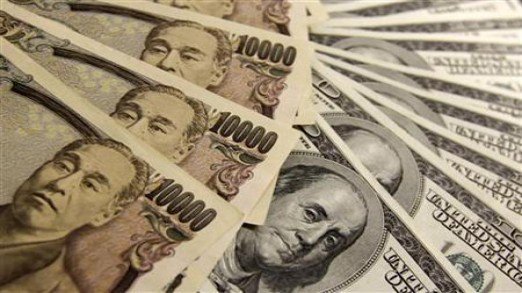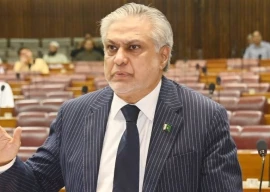
The central bank and the federal government have credited import compression policies for the $6-billion reduction in trade deficit, which fell to $31.8 billion at the end of fiscal year 2018-19.
The State Bank of Pakistan (SBP) let the currency depreciate by more than 26% and the federal government slapped regulatory duties and erected non-tariff barriers to contain imports in the previous fiscal year.
Govt exempts import of new FSRUs from duties
However, the Pakistan Bureau of Statistics (PBS) latest trade bulletin showed that $2.7 billion or 45% of import compression was because of less imports of machinery. As against $11.6 billion worth of machinery imports in the preceding fiscal year, Pakistan spent $8.9 billion on such imports in fiscal year 2018-19, according to the PBS.
Power generating machinery imports slipped to $1.3 billion - a reduction of over 52% in one year. Similarly, electrical machinery imports dropped to $1.8 billion in the last fiscal year. Authorities had expected that the machinery imports would taper off from fiscal year 2018-19 due to completion of CPEC energy projects.
Textile group imports also contracted 21.6% to $3.2 billion - a reduction of $443 million.
On the back of narrowing trade deficit, the current account deficit also shrank to $13.6 billion or 4.8% of gross domestic product (GDP) in the last fiscal year, according to the SBP.
It seems that import compression policies affected the import of food and transport groups, reducing the import bill of these two groups by $1.8 billion in the last fiscal year. Still, food imports stood at $5.7 billion while transport group imports amounted to $3.1 billion.
Pakistan meets its cooking oil needs through imports. Similarly, the domestic car assemblers are also heavily dependent on imports as they have failed to fully localise production of their vehicles. Petroleum group imports remained flat at $14.4 billion while agriculture-related imports fell only $16 million to $8.8 billion, according to the PBS.
“The import compression policy is not working successfully as the reduction in trade deficit induced by currency depreciation is less than $3 billion,” remarked Dr Hafiz Pasha, a renowned economist.
This put a question mark over the current account deficit target of $6.6 billion for the current fiscal year, which the government wanted to achieve largely through currency depreciation, said Pasha.
Under the IMF loan programme, Pakistan cannot impose regulatory duties or take other administrative actions, which are in violation of Article VIII of the IMF agreement.
The staff report says “authorities are committed to eliminating the existing administrative restrictions, which have been imposed to support the balance of payments.”
These measures include regulatory duties on imported intermediate, consumer and luxury goods as well as import restrictions for balance of payments purposes and multiple currency practices (MCP) - in the form of a requirement to fully pre-fund letters of credit, and restrictions on advance payment for imports against letters of credit.
The only tools which were in the hands of the central bank were the interest rate hike and currency depreciation to address external imbalances, said Pasha. This week, the central bank again increased the policy rate by another one percentage point to 13.25%.
Pasha said the authorities may have to let the currency fall by 45% in the current fiscal year in order to cut the current account deficit by more than half to $6.6 billion.
IMF’s assumptions in the staff-level report suggest that the average exchange rate by the end of this fiscal year may be Rs172.53 to a dollar.
Current account deficit contracts 32% to $13.59b
An official of the finance ministry also said reducing the current account deficit below $9 billion would be an uphill task. But he said slowing economic activities would reduce the demand in the economy.
Pasha said increasing exports by over 10% to achieve the current year’s export target of $26.8 billion was also a highly optimistic assumption. The government is required to cut the import bill to less than $52 billion to meet its external sector targets. It is not only the government that gives credit of reduction in the current account deficit to rupee devaluation as the IMF too is of the same opinion.
“The current account deficit started to narrow in the second half of fiscal year 2018-19 on the back of rupee depreciation,” said the IMF report. The narrowing had been mainly driven by import compression, particularly non-oil imports, it added. The IMF said under its programme initially import demand would be contained by tighter fiscal and monetary policies while a gradual export recovery would take hold, underpinned by competitiveness gains from the real depreciation and new investment.
Published in The Express Tribune, July 21st, 2019.
Like Business on Facebook, follow @TribuneBiz on Twitter to stay informed and join in the conversation.












































COMMENTS
Comments are moderated and generally will be posted if they are on-topic and not abusive.
For more information, please see our Comments FAQ